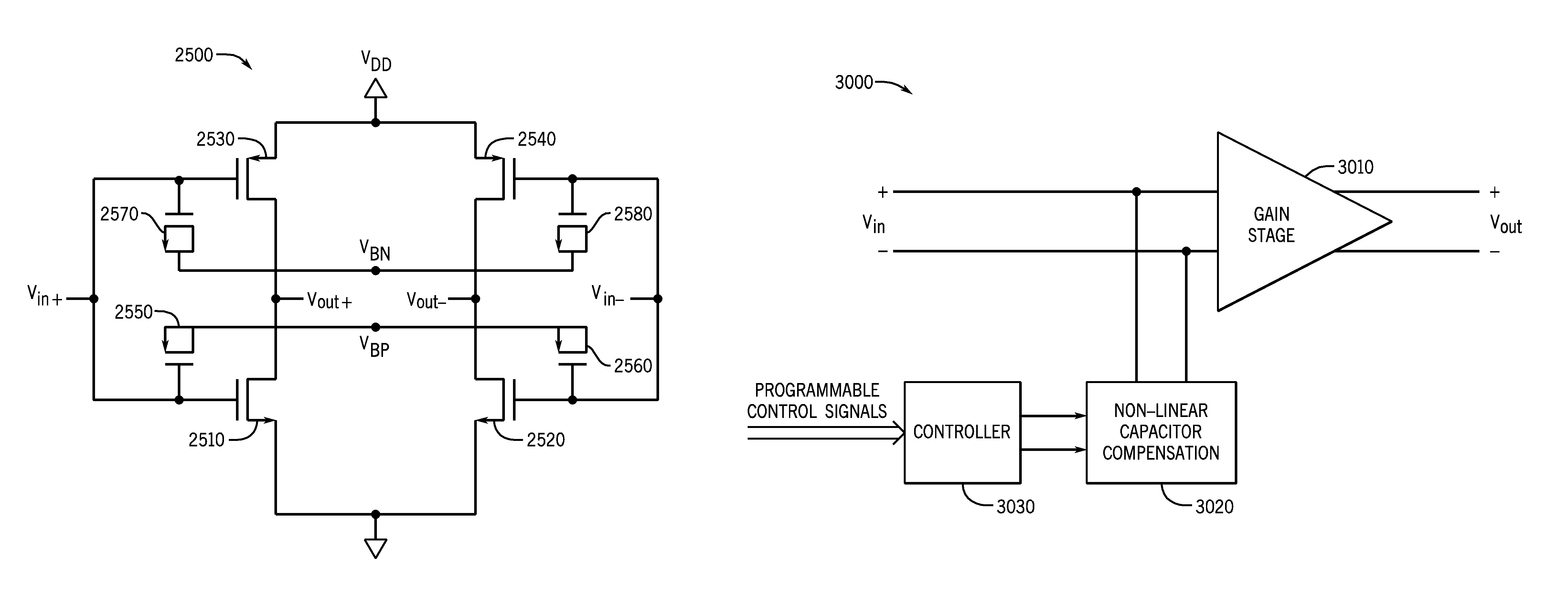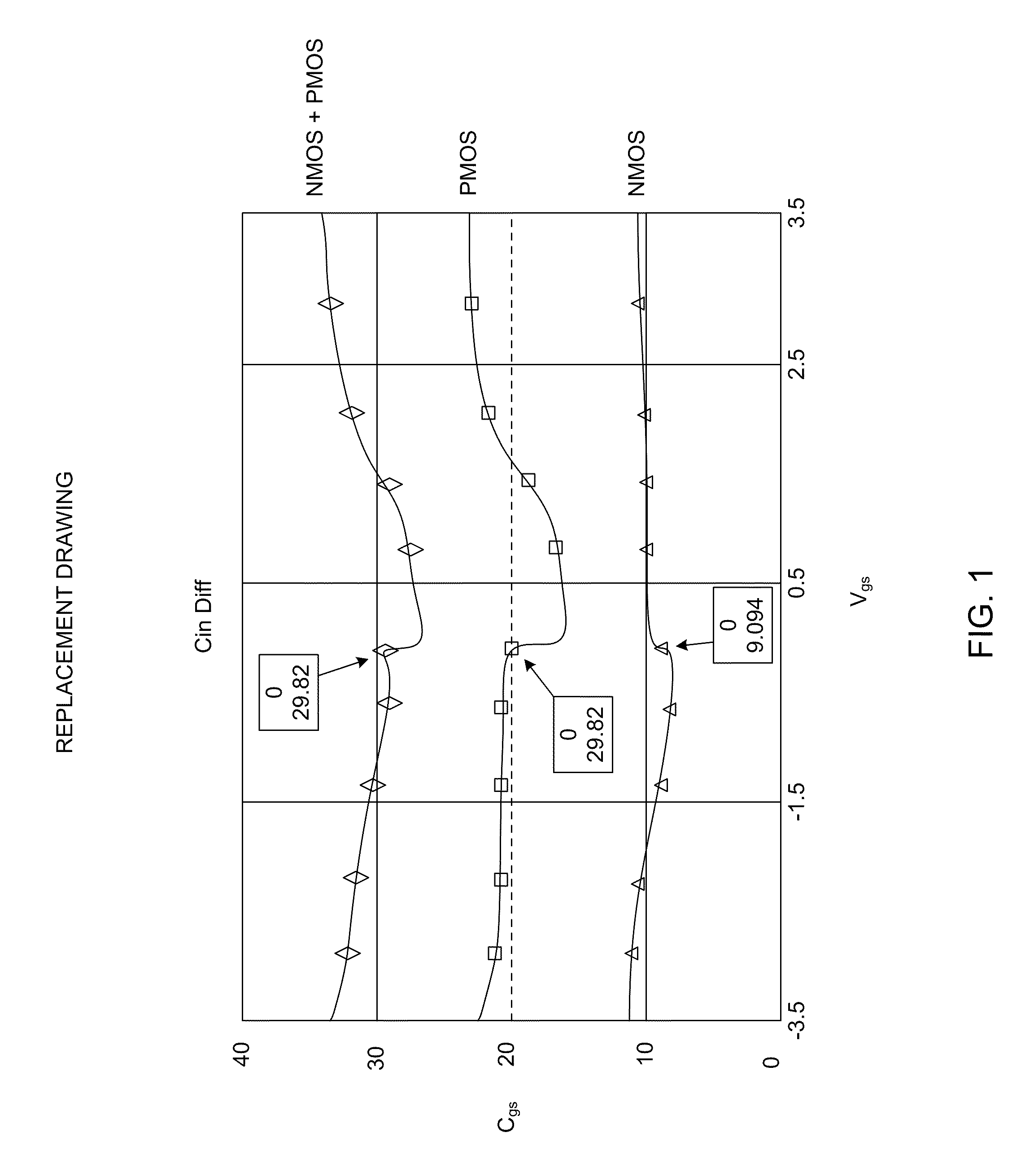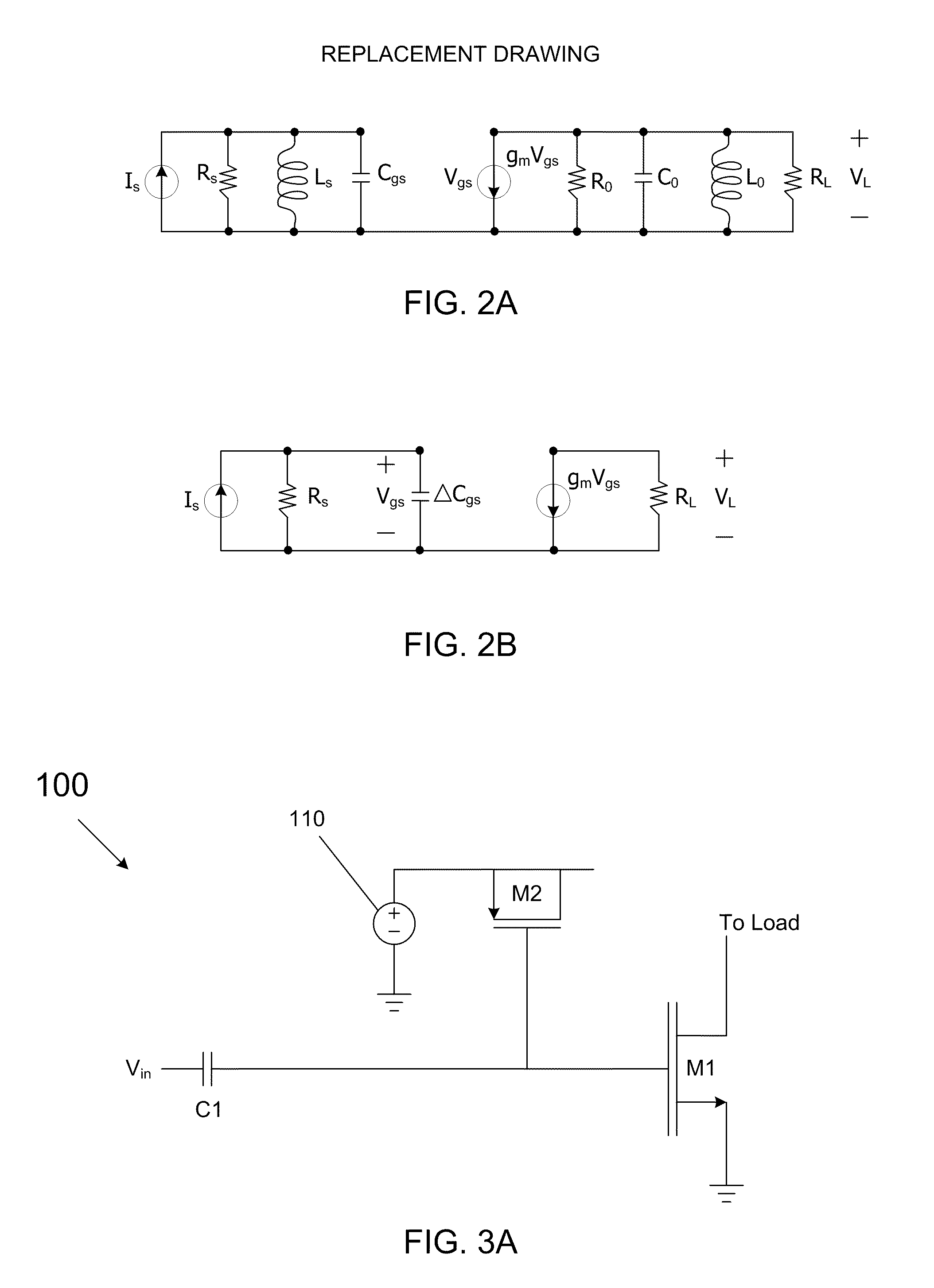Non-linear capacitance compensation
a capacitance compensation and non-linear technology, applied in the direction of rf amplifiers, high-frequency amplifiers, gain control, etc., can solve the problems of significant linearity problems, spectral splatter or leakage of signal energy, and degradation of amplifier overall linearity
- Summary
- Abstract
- Description
- Claims
- Application Information
AI Technical Summary
Benefits of technology
Problems solved by technology
Method used
Image
Examples
Embodiment Construction
[0042]Embodiments may be used to improve linearity of an amplifier, and more particularly to improve phase linearity of a PA such as a CMOS PA. However, the techniques described herein may be used to improve linearity of CMOS devices in circuits beyond PAs. As will be described further below, embodiments may improve linearity by compensating for capacitance changes that occur to a device as it is provided with varying input signal levels. More specifically, as transistors dynamically change their characteristics when conducting in different operating regions, different inherent or parasitic capacitances may exist. Embodiments may attempt to reduce or remove the effects of such capacitance changes.
[0043]In a CMOS gain stage such as used in a PA, MOS devices can be configured as a complementary common-source amplifier in which multiple metal oxide semiconductor field effect transistors (MOSFETs), namely a p-channel MOSFET (PMOS) and an n-channel MOSFET (NMOS), are driven at the gates ...
PUM
 Login to View More
Login to View More Abstract
Description
Claims
Application Information
 Login to View More
Login to View More - R&D
- Intellectual Property
- Life Sciences
- Materials
- Tech Scout
- Unparalleled Data Quality
- Higher Quality Content
- 60% Fewer Hallucinations
Browse by: Latest US Patents, China's latest patents, Technical Efficacy Thesaurus, Application Domain, Technology Topic, Popular Technical Reports.
© 2025 PatSnap. All rights reserved.Legal|Privacy policy|Modern Slavery Act Transparency Statement|Sitemap|About US| Contact US: help@patsnap.com



